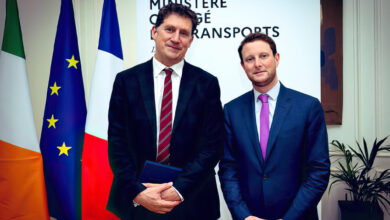‘Now or never’ for limiting warming

Immediate and deep emissions reductions across all sectors are required if global warming is to be limited to 1.5oC, the Intergovernmental Panel on Climate Change (IPCC) has warned.
In the third in a series of assesment reports by the IPCC designed to update governments and policy makers on the latest scientific findings related to tackling climate changes, IPCC Working Group III Co-Chair Jim Skea described a “now or never” scenario if global warming is to be limited to below the target set out in the Paris climate accord.
In August 2021, a previous report by the IPCC, detailing the potential impacts of rising global temperatures, was described as a “code red for humanity” by the UN Secretary General António Guterres. The latest report published in April 2022, is designed to set out the scale of measures that are required to limit warming to an acceptable level.
The report outlines that even with all existing national decarbonisation ambitions implemented, by the end of the century, global temperatures will rise by 3.2oC For context, severe and extreme weather patterns currently seen across the globe are the result of a 1.1oC rise.
Underscoring the need for transformative changes to everything from energy systems to land use and investment, the report says that limiting warming to 1.5oC will require a 43 per cent reduction in greenhouse gas emissions from 2019 levels by 2030. Carbon emissions would need to peak in the next three years, falling rapidly after that, reaching net zero by 2050.
The type and scale of some of the actions that will be required are detailed in the report, including:
Fossil fuels
Despite global pledges to reduce emissions, the reality is that emissions rose by 6 per cent in 2021, in parallel with economic activity. As expected, the report highlights that this alignment will only be broken if fossil fuels are removed. The scale of reduction required will mean traditional coal use would have to fall by 95 per cent by 2050 and the report suggests the 85 per cent decrease in alternative green energy technologies since 2010 is an enabler of ending the age of fossil fuel.
Carbon dioxide removal
Simply decarbonising current processes will not be enough, and for the first time the report identifies the importance of carbon removal from the atmosphere. The IPCC has endorsed carbon dioxide removal (CDR), be that through removal technologies such as filters or increased trees, however, it acknowledges that the preservation and expansion of forests to absorb carbon will not “fully compensate for delayed action” in other sectors. Critics have said that the focus on technology presents too easy a solution for high-polluting countries and industries for not transforming their processes.
Efficiency
Also new, the report includes a chapter on the social aspects of mitigating emissions, with a focus on reducing demand for energy in the areas of mobility, nutrition, and shelter. Highlighting that approximately 10 per cent of the world’s richest households are responsible for 40 per cent of global emissions, the report states that changing individual behaviours could cut emissions by between 40 to 70 per cent by 2050.
Finance
Understandably, greater investment is needed in low-carbon energy if warming is to be limited. Investment will need to increase by around three to six times than current levels, but the IPCC report stresses that some of the additional investment required already exists. Alongside recommending the removal of government subsidies for fossil fuel, the report points out the existing financial cost of climate disaster recovery and suggests that efforts to lower warming, while probably slightly costlier than limiting warming, brings with it much greater co-benefits.





